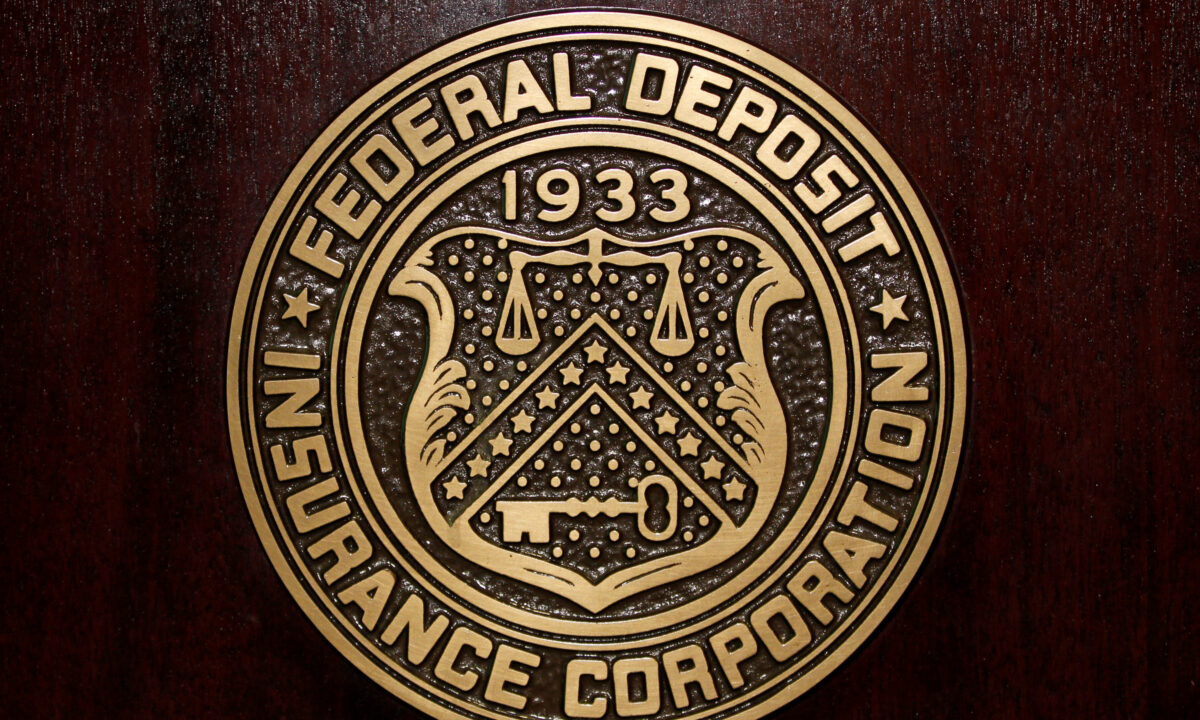


Commentary
March 28 hearings on bank regulation exposed the shortfall of federal regulation. The hearings came in the wake of the Silicon Valley Bank (SVB) failure and the stresses on other banks, like Signature and Republic. To put it frankly, the hearings exposed our regulators appear to be virtually useless.
Among things we learned last week:
The Fed’s failure to act avert the SVB failure—perhaps to seize it as interest rate rises first started putting its balance sheet out of balance—points to a significant regulatory failure, both by the Fed and the FDIC, which shares bank oversight responsibility.
But, sadly, this isn’t the first such regulatory failure in financial oversight.
In the Lehman Brothers bankruptcy that triggered the 2008 financial crisis, regulators missed what could only be described as blatant accounting manipulation. Lehman was able to make it appear that its balance sheet was more robust than it was by engaging in something it called “Repo 105.” Repo 105 allowed Lehman to sell $105 of its assets for $100 cash, but with the promise to repurchase, or “repo” the asset at another date (hence the phrase Repo 105). An accounting rule at the time allowed the transaction to be treated as a sale, not as financing, as repos typically are. As a consequence, Lehman’s balance sheet was reduced by $50 billion in its quarterly report, only to be increased a day or two later. The transaction allowed Lehman’s net leverage to be reduced to 12.1 when it would otherwise be 13.9, making it look better to analysts. When the subprime mortgage market, in which Lehman had a significant stake, collapsed in 2007, Lehman was on the ropes. By September 2008, it collapsed and went bankrupt. And the Securities and Exchange Commission (SEC) missed it, entirely, until virtually the moment Lehman went under.
In Bernie Madoff’s horrendous swindle of $65 billion from his investors, regulators at the SEC were warned, repeatedly, of Madoff’s Ponzi scheme for nearly a decade, but refused to take action. An options trader at another firm, Harry Markopolos, who had been tasked by his bosses to replicate Madoff’s seemingly superior trading strategy, realized it could not be done within minutes of reading Madoff’s documentation. “I read his strategy statement, and it was so poorly put together,” Markopolos was quoted as saying. “His strategy as depicted would have trouble beating a zero return, and his performance chart went up at a 45-degree line: that line doesn’t exist in finance, it only exists in geometry classes.” (I had an occasion to see some of the original dot-matrix printouts Madoff had sent to his clients at my former accounting firm after we took on some of the clients who had been cheated by Madoff after he was arrested. Several of the stocks listed had not been traded in years, having been merged out of existence years earlier. But Madoff showed them as “investments.”) Again, the regulators did nothing, despite warnings and despite evidence that even a first-year auditor would have seen as a fraud.
There are a number of reasons for these failures.
First, the regulators are mostly career civil servants who are not up-to-date on market conditions. Market innovations like Repo 105 or the securitization of mortgage securities can happen in days, weeks, months, or years before regulators catch on to it.
Second, regulators in higher positions of authority tend to be attorneys who know the law, but not its practical application. They also tend to be less flexible. Harry Markopolos relates that one SEC administrator told him that he could not be a “whistleblower,” even though he had details of Madoff’s fraud, because he did not work for Madoff’s firm.
Third, and sadly, there is a revolving door between the people who purportedly regulate financial institutions and the financial institutions they purport to regulate, as was illustrated in a tweet from @UnusualWhales of a House Financial Services Committee hearing last September. As shown, Rep. Trey Hollingsworth (R-Ind.) introduces his staffer to the president of Bank of America, noting that she will join the bank the next week. Bank of America’s CEO chuckles and replies that her father already works for BofA.
According to OpenSecrets.org, of the $472,000 Hollingsworth raised in 2021-2022, $208,000 came from Political Action Committees of the Insurance, Banking, Securities, and Investment industries he helps regulate.
How Regulation Can be Improved
The best “regulator” is transparency. As with any other product or service, the more knowledge consumers (and depositors) have, the better the decisions they will make. Here are some steps that can be taken to improve transparency and confidence in the regulatory oversight of America’s financial institutions.
America’s banking system, and particularly our regional and “home town” banks, are a critical element of the American capitalist system and the principal drivers of the US economy. It should be safeguarded and protected using the technology, transparency, and expertise we have available. Concentrating it in the hands of some money center megabanks, as current policy seems to be encouraging, would have a profoundly negative effect on commerce and the U.S. economy.
